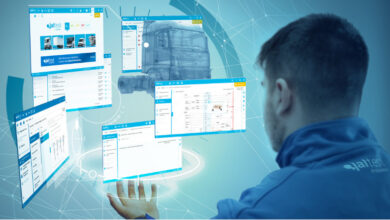Adapting Your Home for Remote Work: Tips and Strategies

With the shift towards remote work, setting up a productive home office has become indispensable. The Montecito real estate team Alemann & Associates recommends creating a designated workspace to enhance productivity. A dedicated workspace not only separates your work life from your home life but also signals your brain that it’s time to focus. Invest in ergonomically designed furniture to prevent strain injuries and ensure adequate lighting to reduce eye fatigue. Another crucial factor is minimizing distractions. Consider noise-canceling headphones or white noise machines if your household is bustling.
Moreover, effective home office tips highlight the importance of personalization. Adding elements that inspire you, such as plants or artwork, can make the space more enjoyable and motivating. The goal is to create an environment where you can be your most productive self.
Balancing Work and Personal Life
Achieving a harmonious balance between work and personal life is one of the most significant challenges of working from home. It is crucial to establish boundaries to ensure that work does not encroach on personal time and vice versa. One effective strategy is to set specific work hours and stick to them. Communicating these boundaries to family members can help maintain a disruption-free work environment. Allocating time for breaks and adhering to a consistent schedule helps maintain this delicate balance.
Moreover, it’s essential to have a physical and mental switch-off routine. Transition from work mode by taking a walk or engaging in a hobby. This practice rejuvenates the mind and reduces stress, improving overall well-being.
Technological Tools for Remote Work
Technology is essential to the effectiveness and simplicity of remote work. Numerous tools can help solve the challenges associated with working from home. For instance, video conferencing tools like Zoom facilitate face-to-face interaction, making collaboration seamless. Project management platforms like Trello or Asana help track tasks and deadlines and ensure that team goals are met.
Easy access and file sharing are made possible by cloud storage options like Dropbox and Google Drive, which are crucial for preserving workflow continuity. According to TechRadar, the best remote working tools also include communication apps like Slack, which centralize team communications, reducing the need for emails and making real-time collaboration possible. Utilizing these tools can make remote work smoother and more efficient.
Health and Well-Being in a Remote Work Setup
It’s easy to neglect health and well-being when the lines between home and work blur. Maintaining productivity and general pleasure requires placing a high priority on one’s physical and mental well-being. Make time during your job to stretch or take short walks. The likelihood of physical issues like back discomfort or eye strain can be considerably decreased by taking these little breaks.
Mental health shouldn’t be overlooked, either. Engage in activities that reduce stress, such as meditation, yoga, or reading. Integrating a well-balanced diet and adequate sleep into your routine can also significantly impact your well-being.
Maintaining Professional Relationships Virtually
Building and maintaining professional relationships can be challenging when you’re not in a physical office. However, regular virtual meetings and clear, consistent communication can bridge this gap. Scheduling regular check-ins with your team and managers can foster a sense of unity and collaboration.
Additionally, participating in virtual team-building activities can help maintain camaraderie. Clear communication and active participation in discussions can also build and sustain professional relationships effectively.
Adapting to Change
The ability to adapt to change is crucial in a remote work environment. This flexibility allows you to adjust to new working conditions and make the most out of the situation. Embracing changes and using them as opportunities can enhance your work routine and boost productivity. Being open to learning new tools and techniques can also ease the transition to remote work.
Flexibility in work hours and approach can make remote work more effective. For instance, adjusting your schedule to the most productive times of your day can result in better work outcomes.
Monitoring Productivity
Keeping track of productivity is essential for remote work success. Utilize productivity tracking tools to measure your progress. Setting clear, measurable goals helps you maintain focus on your tasks. Regular self-assessment can provide insights into areas that require improvement and help you develop more effective work strategies.
Feedback loops with supervisors and colleagues are also useful in identifying areas for improvement and can help maintain high productivity levels.
The Environmental Impact of Remote Work
Remote work has a significant positive impact on the environment. One of the most noticeable benefits is the reduction in daily commuting, which in turn reduces carbon emissions. According to various studies, the decrease in commuting traffic has led to a substantial drop in the overall carbon footprint. Additionally, remote work promotes a more sustainable lifestyle by reducing the use of office resources such as electricity, paper, and water.
In conclusion, remote work offers numerous advantages, from personal productivity and well-being to broader environmental benefits. By setting up an effective home office, balancing work and personal life, using the right technological tools, prioritizing health, maintaining professional relationships, adapting to changes, and monitoring productivity, you can make the most out of your remote work experience.
Conclusion
In conclusion, transitioning to remote work necessitates thoughtful adaptation in several key areas to maximize its benefits. Establishing a productive home office is foundational, requiring dedicated space, ergonomic setup, and personalized touches to enhance focus and creativity. Balancing work and personal life demands clear boundaries and routines, which are crucial for sustained well-being and efficiency. Leveraging technological tools facilitates seamless collaboration and task management, crucial for maintaining productivity. Prioritizing health through breaks, exercise, and mental rejuvenation ensures long-term sustainability in a remote setup.
Furthermore, maintaining professional relationships virtually demands proactive communication and engagement, fostering teamwork and cohesion. Embracing change and flexibility are essential traits that enable continuous adaptation and growth in remote work environments. Monitoring productivity and setting clear goals ensure accountability and progress. Ultimately, remote work not only enhances individual productivity and well-being but also contributes significantly to environmental sustainability by reducing commuting and office resource consumption. By embracing these strategies, individuals can optimize their remote work experience, achieving a harmonious balance between professional success and personal fulfillment.



